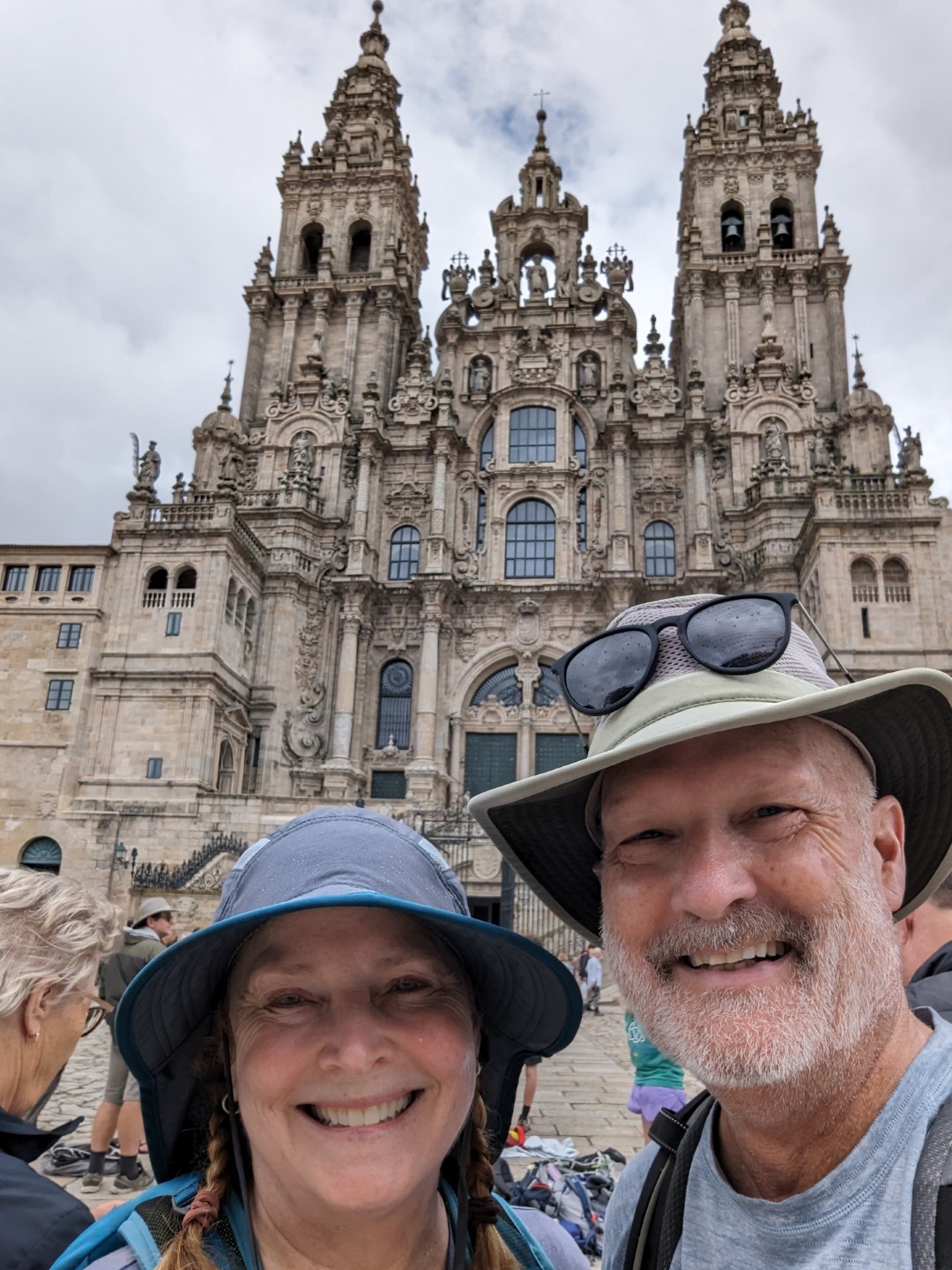After 20 total walking days and two rest days, we arrived in Santiago de Compostela, along with many other pilgrims. The route we chose was from Porto, Portugal to Santiago, Spain (Coastal Route + Spiritual Variant) is about 175 walking miles. Including walking off the designated path to get to our lodgings, and some exploring (and a couple navigational errors) we walked about 190 miles. The most famous route (Camino Frances) is about 500 miles long, starting in France and traversing Spain. Kudos to those that walk that path, 190 miles was quite enough for now.
From Baiona, Portugal to Santiago de Compostela
We traveled the second half a bit more confidently with tougher feet and somewhat more sturdy legs. The second half had fewer beaches, but we walked through beautiful countryside and villages, as well as some ordinary busy streets in a few places. We crossed over from Portugal to Galicia region of Spain near the halfway point of our trip. Galicia is a beautiful land with large bays fed by rivers, rolling green hills with forest and lots of vineyards. Well-kept gardens and fields of corn and other crops. Hydrangeas in full bloom growing like weeds against old stone walls. Eucalyptus forests and blackberry vines. Many old stone houses, some in ruins and many restored. Old stone fishing villages and old roads, some with their original stone paving and wagon wheel ruts cut in the surface over the course of hundreds of years of use.
Ruta de Piedras y Agua
We especially liked the section that follows the Ruta de la Piedra y el Agua (route of rocks and water), The Monasterio de Santa María de Armenteira is near the top of the route, and the ruins of the mills run along the cascading Armentreira river. One mill towards the bottom has been restored.










The number of pilgrims increased after Vigo, which is just over 100 km from Santiago, as this is the minimum distance a pilgrim must travel to the Pilgrim Certificate. In the last few days we saw organized tour groups of day-pilgrims on the road, with matching colored scarves. They had prearranged places to eat and stay, and their tour bus (and luggage) waiting at each destination. No judgement, everyone walks (or bikes, or rides or sails) their own Camino in their own way, at their own pace, carrying whatever load they choose, staying where they choose.
Here are some other photos from the final 10 days of walking.




















































Credencial Peregrino
The rubber stamps collected in the “Credencial” booklet along the way is proof of having walked the Camino (bike, boat or horse are other options). After arriving at the Cathedral de Santiago de Compostela, pilgrims find their way to the nearby Pilgrim’s Office to have their booklet checked, receive the final stamp and the certificate of completion. We felt ridiculously proud to get that final stamp and certificate.


Peregrino Life
In normal life we are surrounded by many possessions and comforts, we are not affected much by the weather, have a familiar daily routine and sleep in the same bed every night. On the Camino everything is reversed. In general, pilgrims have just a few possessions which they carry in a backpack, have the physical challenge of walking a large part of the day in whatever weather there may be, are constantly confronted with new sights and environment, and find new places to eat every day and new places to stay every night. It is a simple existence living for a few weeks with just some clothes in a backpack and a direction to walk. A good time to reflect on life, family and friends and plan for the future.
I collected over three hundred short videos along the walk, and edited them into a 25 minute video to remind us of our time as pilgrims. Watch if you have a half hour to spare, And if you are considering walking this route, “Buen Camino!”
After a few days resting up in Santiago and a couple days in Porto, we will head to Madeira, an island in the Atlantic belonging to Portugal. We will be doing some hiking there as well.


Leave a Reply